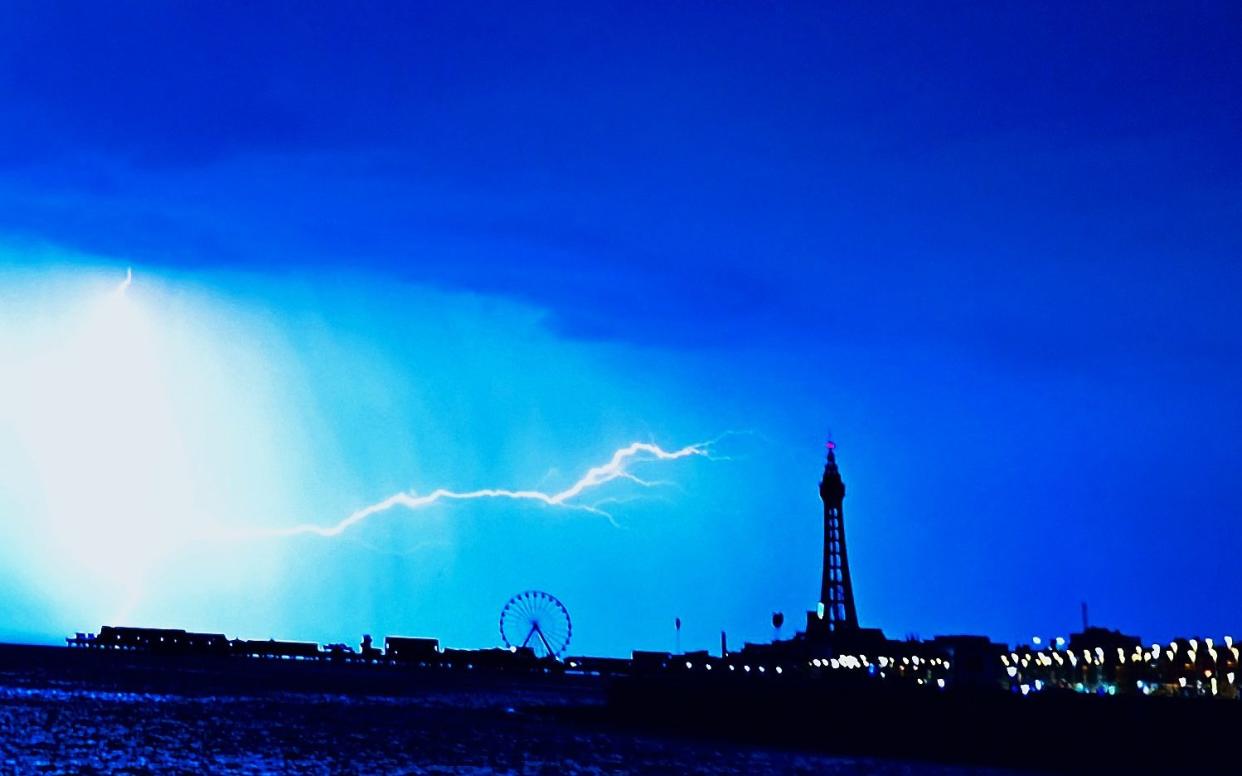Half of all lightning strikes this year have been recorded since Sunday, Met Office says

Lightning warnings have been issued as more than half of strikes over the past year hit the UK this week.
Britain was battered by summer thunderstorms on Tuesday and Wednesday after weeks of dry weather, as flash flooding hit the Midlands and the South.
Data recorded by the Met Office shows 26,718 lightning strikes over UK land between Sunday and Wednesday. Just under 50,000 were recorded over the past year.
Lightning strikes can cause fires, fatalities and travel disruption. On Tuesday a train full of passengers was stranded near Hither Green in south-east London after a suspected lightning strike disabled electrics.
Sadiq Khan, London's mayor, issued advice on Thursday morning on staying safe in a thunderstorm.
'Stay in your car'
Simon King, the BBC weather forecaster, said: "If you're near a building, it's best to seek some shelter. If you happen to be out travelling in your car, stay in your car, because any lightning that might hit it goes around the metal box and the electricity gets diffused by your rubber tyres.
"If you're outside away from any shelter the best thing you can do is find an open field and get into the middle away from any trees or metal poles and crouch low to the ground.
"And of course the last thing you want to do in a thunderstorm is put up your umbrella."
Met Office data suggests that thunderstorms have actually become less likely over the past 30 years, with activity increasing in the north of the UK and decreasing in the south.
Overall there is on average one fewer "day of thunder" per year than there was in 1990, the study found.
The finding runs contrary to global studies which have suggested that climate change would increase the amount of lightning strikes by about 12 per cent for every degree rise in global temperature.
More energy in atmosphere
Warmer weather leads to the potential for more energy in the atmosphere, increasing the likelihood of heavy rain, lightning and storms.
"Between the two 30-year periods 1961-1990 and 1991-2020, the mean temperature of the UK rose by 0.8C from 8.3C to 9.1C," the Met Office said.
"Scientists will need to undertake further research to understand why the increase in the UK’s mean temperature appears not to have led to a corresponding increase in lightning activity; in contrast to the 2014 study,"
Ed Stone, the Met Office observations scientist who led the study, said: “Our study has shown that in the United Kingdom we are less likely to see a thunderstorm today than we were 30 years ago.
"Although we have not attempted to investigate the changes shown, it is possible that some of the trends seen are due to decadal-scale oscillations in the atmosphere.
“The findings may also help us to predict future lightning activity as part of climate change. We hope that the methods presented can support significant further research using other climatological data.
"Thunderstorms are among the most impactful elements of weather in the UK. Understanding more about their frequency has important implications for increasing our knowledge of future climate change and severe weather events.”
Forecaster said the UK would see sunshine and showers after a mix of intense heat and torrential rain in recent weeks.
After days of amber and yellow thunderstorm warnings for much of the country, the Met Office said "more typical" summer weather was in store.
Forecaster Craig Snell said: "It will be comfortable for most of the UK compared to the extreme heat we have been experiencing.
"Any rain that does fall from the sky will generally be much lighter than it has been.
"It will be a mixture of sunshine and showers, with the majority of the showers across the northern half of the country over the next few days."
The paper was published in the Quarterly Journal of the Royal Meteorological Society.

 Yahoo Movies
Yahoo Movies 
